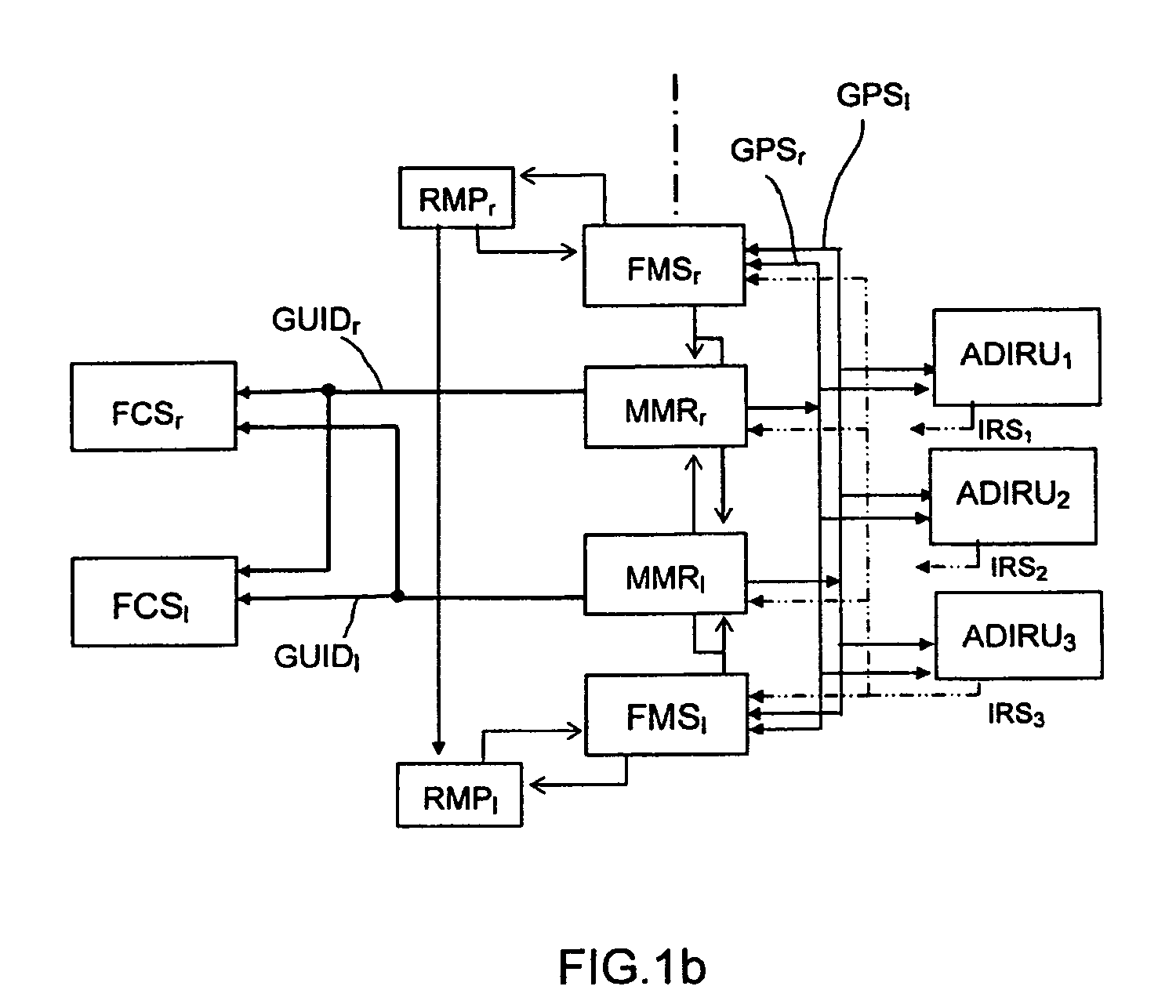Architecture of an onboard aircraft piloting aid system
a technology for aircraft and pilots, applied in the direction of process and machine control, instruments, etc., can solve the problems of insufficient architecture of the system with a single gnss subsystem to satisfy the integrity and continuity, the characteristic failure rate of the board cpu/sub>3 is far too high, and the failure rate of the radio frequency signal is normally well below the risk tolerance of the application
- Summary
- Abstract
- Description
- Claims
- Application Information
AI Technical Summary
Benefits of technology
Problems solved by technology
Method used
Image
Examples
Embodiment Construction
[0066]In the description below, and with reference to the figures, the following notations are used:[0067]DGPSr, DGPSl designate the data obtained from the GNSS signals SGPS and augmentation signals Saug, typically the GBAS augmentation signals, or even the SBAS augmentation signals. This data is supplied as output from the receivers MMRr, MMRl respectively.[0068]IRSi designates the inertial data supplied by the inertial reference ADIRUi unit i of the IRS system over an associated input / output bus.
[0069]HYBi designates the hybrid data between the data DGPSr and / or DGPSl and the inertial data from the unit ADIRUi of the inertial reference system.
[0070]A distribution according to the invention of the functions of the GLS processing subsystem is based on the existing redundant structures of the navigation system as previously described and illustrated in FIGS. 1a, 1b and 2. In particular, this distribution relies on the links provided between the various elements, in particular, the in...
PUM
 Login to View More
Login to View More Abstract
Description
Claims
Application Information
 Login to View More
Login to View More - R&D
- Intellectual Property
- Life Sciences
- Materials
- Tech Scout
- Unparalleled Data Quality
- Higher Quality Content
- 60% Fewer Hallucinations
Browse by: Latest US Patents, China's latest patents, Technical Efficacy Thesaurus, Application Domain, Technology Topic, Popular Technical Reports.
© 2025 PatSnap. All rights reserved.Legal|Privacy policy|Modern Slavery Act Transparency Statement|Sitemap|About US| Contact US: help@patsnap.com



